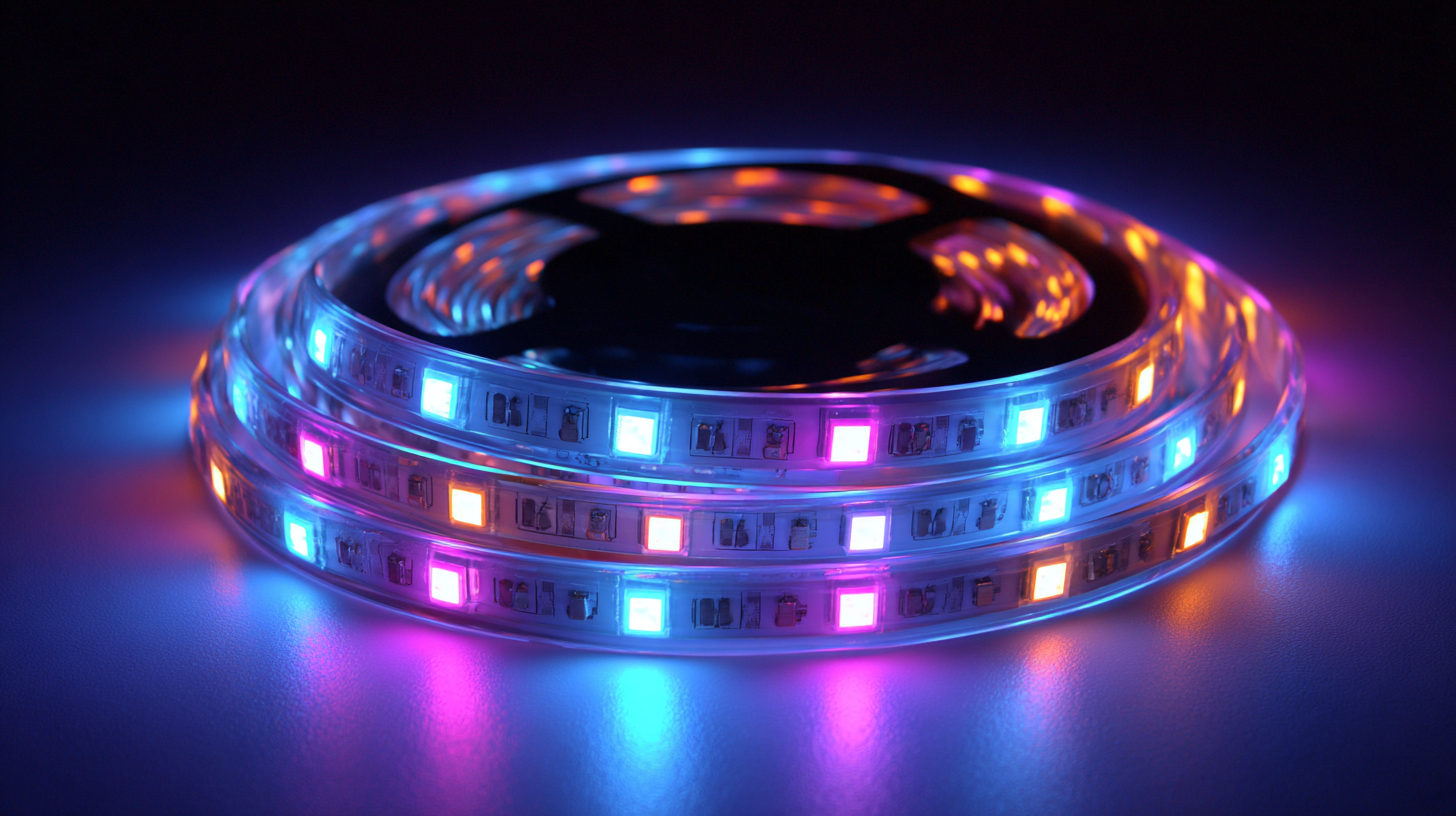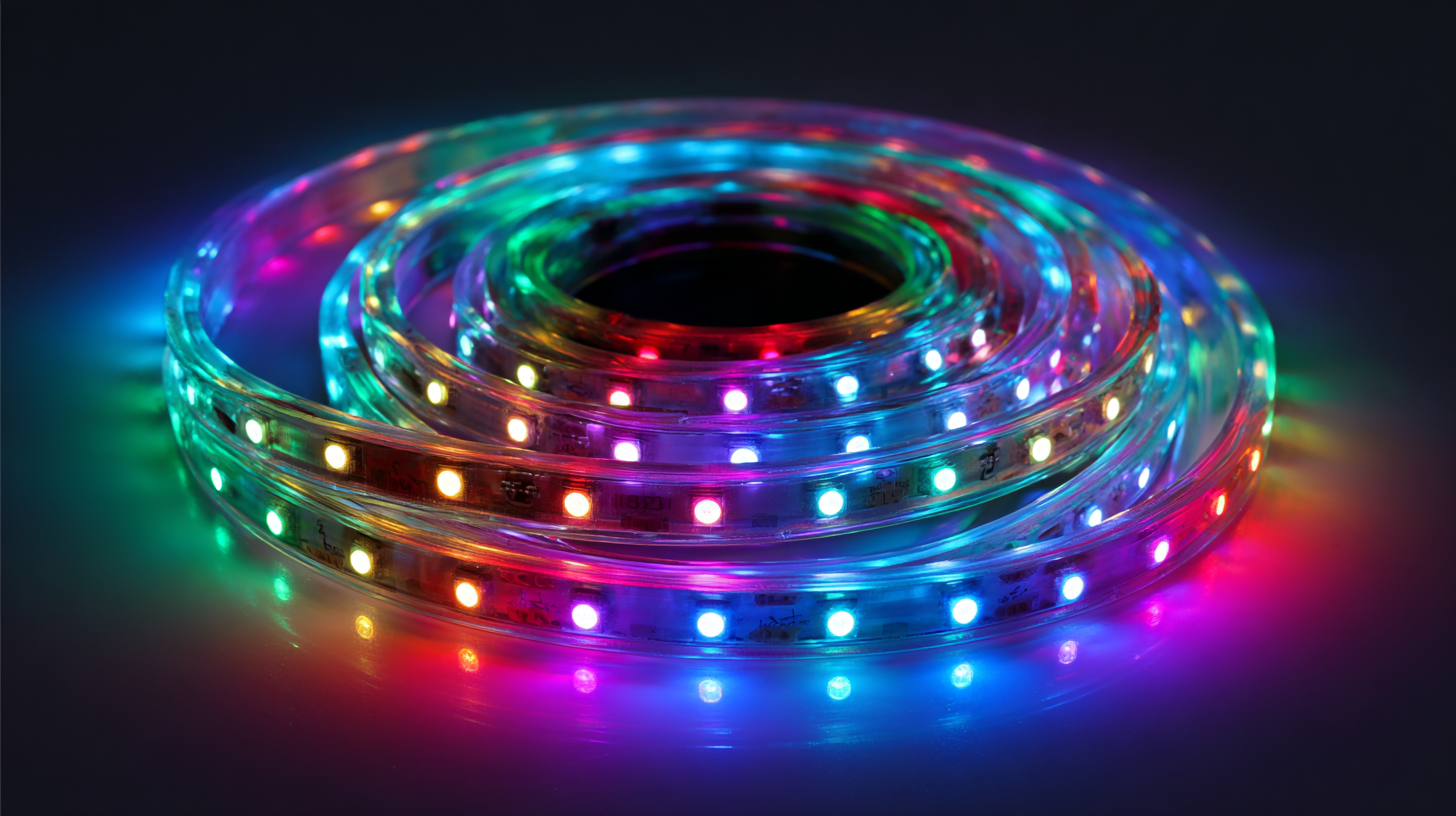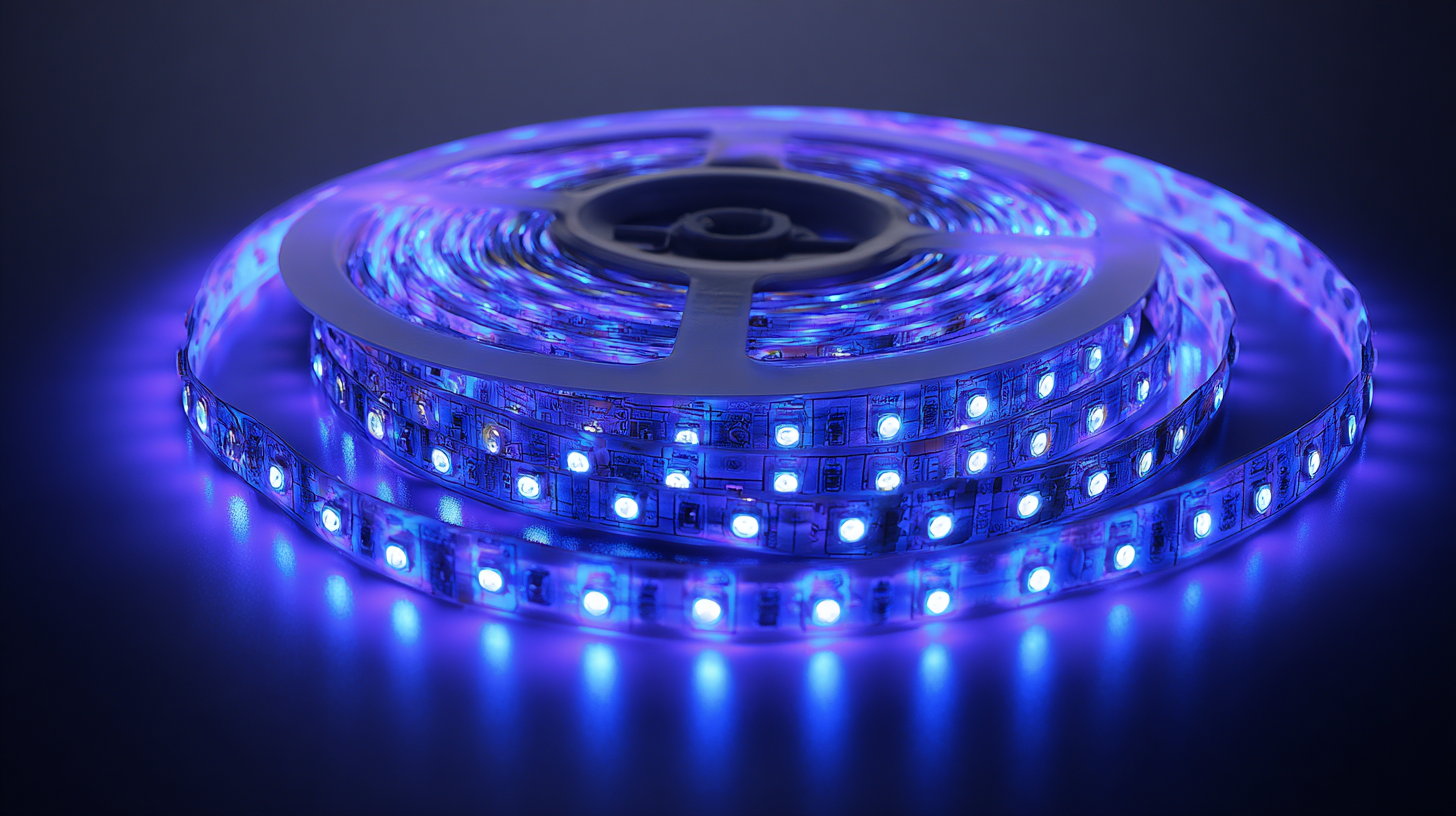The Ultimate Guide to Choosing the Perfect LED Strip for Your Project
In recent years, LED strips have emerged as a versatile and energy-efficient lighting solution, transforming the way we illuminate our spaces. According to a report by the U.S. Department of Energy, lighting accounts for approximately 15% of all electricity expenditures in residential and commercial sectors. Within this context, LED lighting, including LED strips, is expected to comprise up to 60% of all lighting installations by 2030 due to their significant energy savings and longevity. As projects increasingly call for custom lighting solutions, understanding the benefits of different types of LED strips is crucial. From enhancing aesthetic appeal to providing functional illumination, the right LED strip can elevate any project—be it for ambiance in homes, task lighting in workspaces, or dynamic displays in retail environments.

This guide will delve into the myriad benefits of LED strips, helping you make an informed choice for your next project.
Understanding the Different Types of LED Strips for Your Needs
When it comes to selecting the ideal LED strip for your project, understanding the various types available can make all the difference. LED strips come in a multitude of options, each catering to specific needs and applications. For instance, some strips are designed to be flexible and can easily bend around corners, making them perfect for accent lighting in complex designs. Others may be waterproof, suitable for outdoor use or even in bathrooms where moisture is prevalent. Additionally, brightness levels and color temperatures vary, so it’s crucial to choose a strip that complements your space effectively.
As the residential LED strip market continues to grow, projected to rise from a valuation of $172.33 million in 2025 to $219.14 million by 2033, the variety of available products will only increase. This growth, driven by advancements in technology and rising consumer demand for energy-efficient lighting solutions, allows for more specialized LED strips to emerge. By understanding your specific requirements—such as the intended use, desired brightness, and installation environment—you can select an LED strip that not only enhances your project but also aligns with the evolving market trends.

Key Features to Look for in High-Quality LED Strip Lights
When choosing the perfect LED strip lights for your project, it’s vital to consider several key features that can significantly affect performance and longevity. One of the most important aspects is brightness; newer models can offer brightness levels that are nearly double that of their predecessors. Increased luminosity ensures that your space is effectively illuminated without the need for excessive strips, ultimately saving energy and costs.
Another essential feature to look for is uniform lighting. Innovations in LED technology, such as patented designs that stabilize and ensure even light distribution, are critical. These developments reduce hotspots and dark areas, creating a more aesthetically pleasing effect in any application, be it decorative or functional. Additionally, thermal management is a significant concern in LED strips; if heat isn’t dissipated effectively, the strip's lifespan and light quality can diminish significantly. Therefore, selecting LED strips with improved heat dissipation systems can enhance reliability and performance.

Comparing LED Strip Brightness: Lumens, Watts, and Efficacy
When selecting the right LED strip for your project, understanding brightness metrics such as lumens, watts, and efficacy is crucial. Lumens measure the total amount of visible light emitted by a source, while watts indicate the energy consumption of the LED strip. Efficacy, expressed in lumens per watt, helps you determine how effectively the strip converts electrical power into light. By focusing on these factors, you can ensure that your chosen LED strip provides the desired illumination for your specific needs.
Tip: Always consider the area you intend to light. A higher lumen output is essential for larger spaces or tasks that require more visibility, such as work areas or kitchens. Conversely, for ambient lighting or cozy spaces, you may opt for strips with lower lumens to create a softer glow without overwhelming brightness.
When comparing LED strips, pay attention to the efficacy rating. Strips with higher efficacy values not only provide better brightness for less power but also lead to energy savings in the long run. Investing in quality strips with good efficacy can result in a more cost-effective solution, allowing you to enjoy bright, efficient lighting for various applications without stressing your budget.
The Ultimate Guide to Choosing the Perfect LED Strip for Your Project
| Type of LED Strip | Lumens per Foot | Watts per Foot | Efficacy (Lumens/Watt) |
|---|---|---|---|
| Warm White LED Strip | 300 | 5 | 60 |
| Cool White LED Strip | 400 | 6 | 66.67 |
| RGB LED Strip | 250 | 7 | 35.71 |
| High Output LED Strip | 600 | 10 | 60 |
| Flexible LED Strip | 260 | 4 | 65 |
Choosing the Right LED Strip Length for Your Project Space
When selecting LED strip lights for your project, determining the right length to fit your space is crucial for both aesthetic appeal and functionality. According to a report by the National Electrical Manufacturers Association (NEMA), proper length selection can enhance the effectiveness of illumination while minimizing energy waste. It’s essential to measure your installation area accurately, allowing an excess of no more than 10% to ensure a seamless fit without compromising design elements.
Additionally, research by the Lighting Research Center highlights that LED strips provide optimal brightness when installed at the recommended distance from the surface they illuminate. For instance, if a project requires lighting for an under-cabinet setup, the recommended distance is usually around 12 to 18 inches, while cove lighting may necessitate a longer strip to achieve an even glow across the ceiling. By carefully calculating the needed length based on the application and layout, you can ensure that your LED strip lighting enhances the visual appeal of your space while providing adequate illumination and efficiency.
The LED Strip Lengths Suitable for Various Project Sizes
This chart illustrates the recommended LED strip lengths suitable for various room sizes. Depending on the size of your project space, you can choose the appropriate length to achieve optimal lighting effects.
Exploring Color Options: RGB vs. Single Color LED Strips
When it comes to selecting LED strips, the color options play a pivotal role in your project's aesthetic and functionality. RGB LED strips offer a versatile solution, allowing users to cycle through an extensive spectrum of colors. According to a recent report by LED Insider, the global market for RGB LED products is projected to grow at a CAGR of 12% over the next five years, reflecting the increasing demand for customizable lighting solutions in both residential and commercial applications. This adaptability makes RGB strips ideal for dynamic environments such as event spaces, gaming setups, and artistic installations.
On the other hand, single color LED strips, such as warm white or cool white options, provide a consistent and focused light that is often preferred for tasks requiring attention to detail or mood setting. A comprehensive analysis by Research and Markets indicates that single color LED strips will continue to capture a significant share of the market due to their straightforward installation and energy efficiency, particularly in applications like under-cabinet lighting and landscape illumination. The choice between RGB and single color options fundamentally depends on the desired effect and the context of use, allowing for tailored solutions in various design scenarios.
